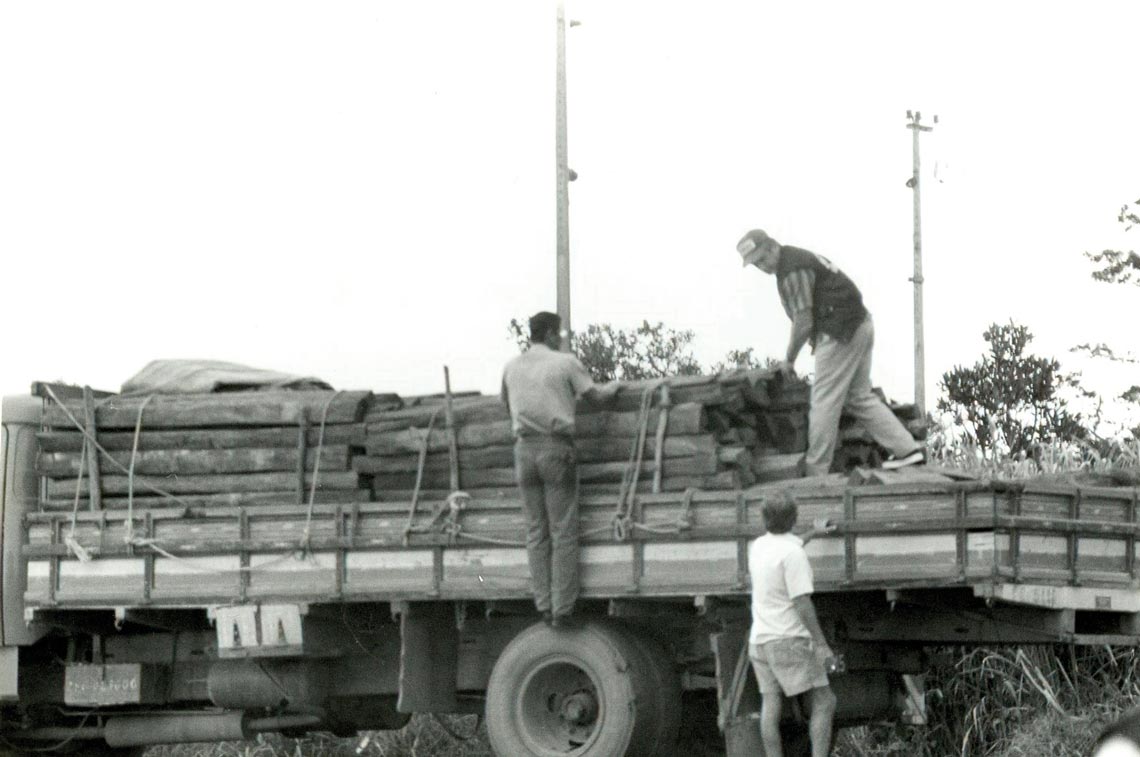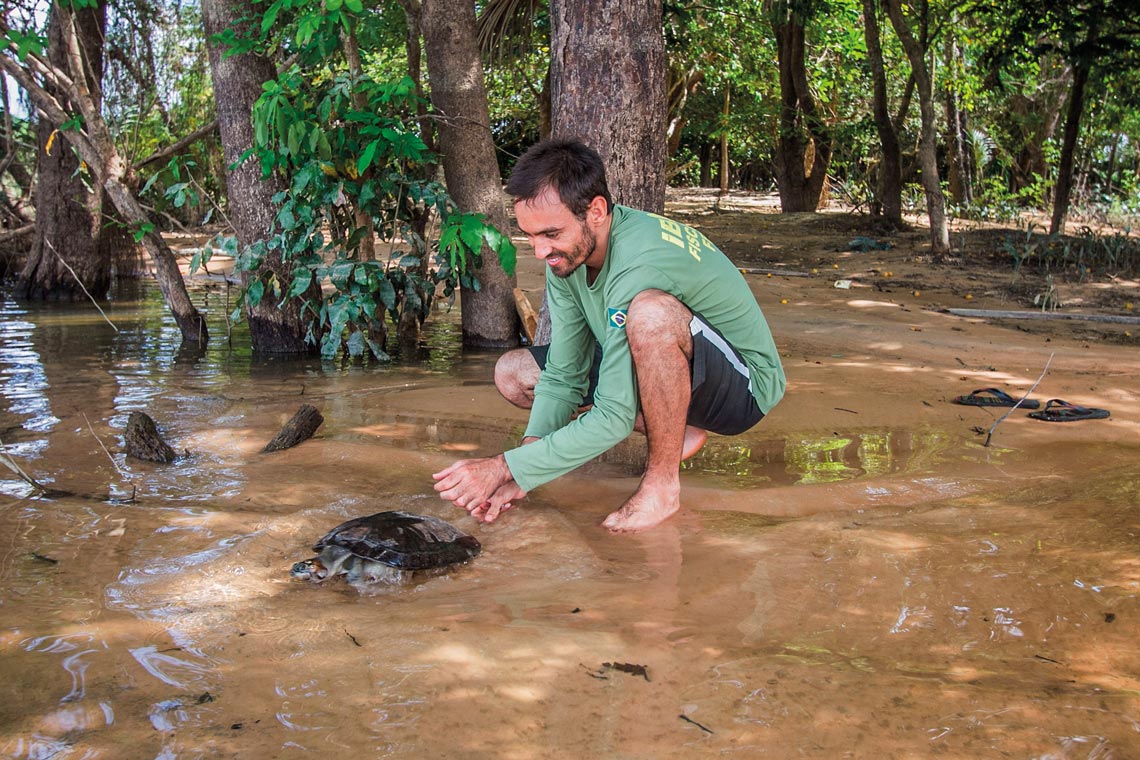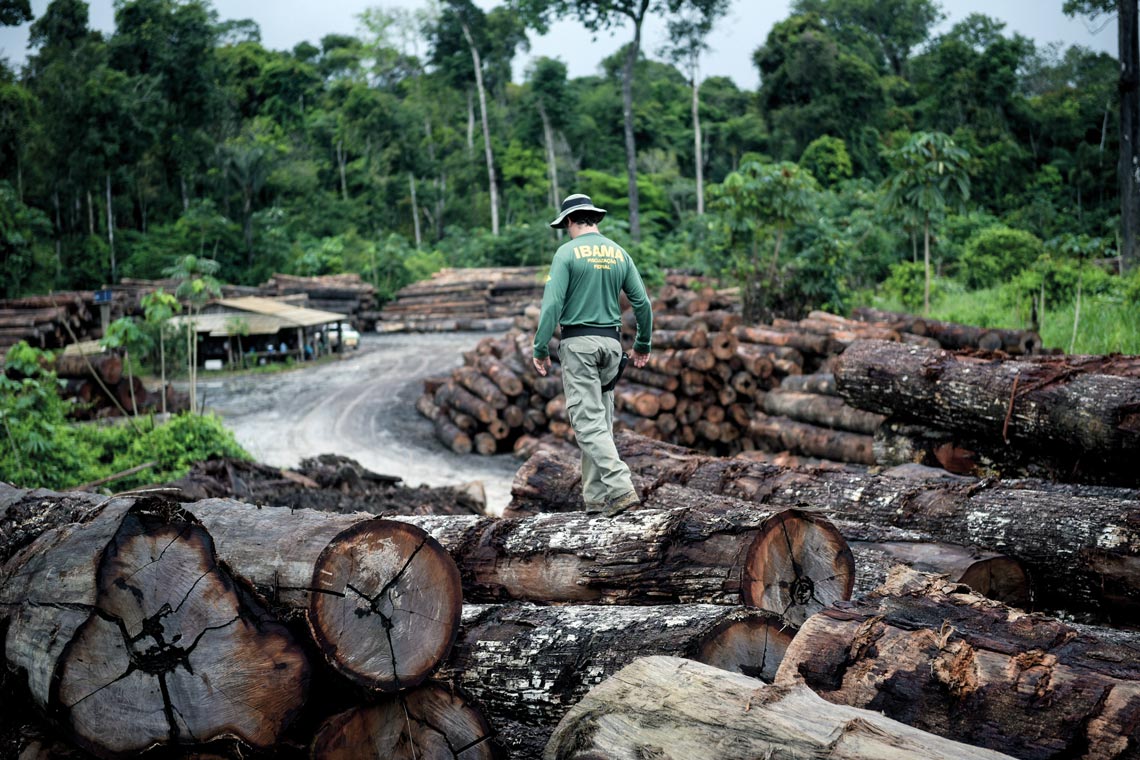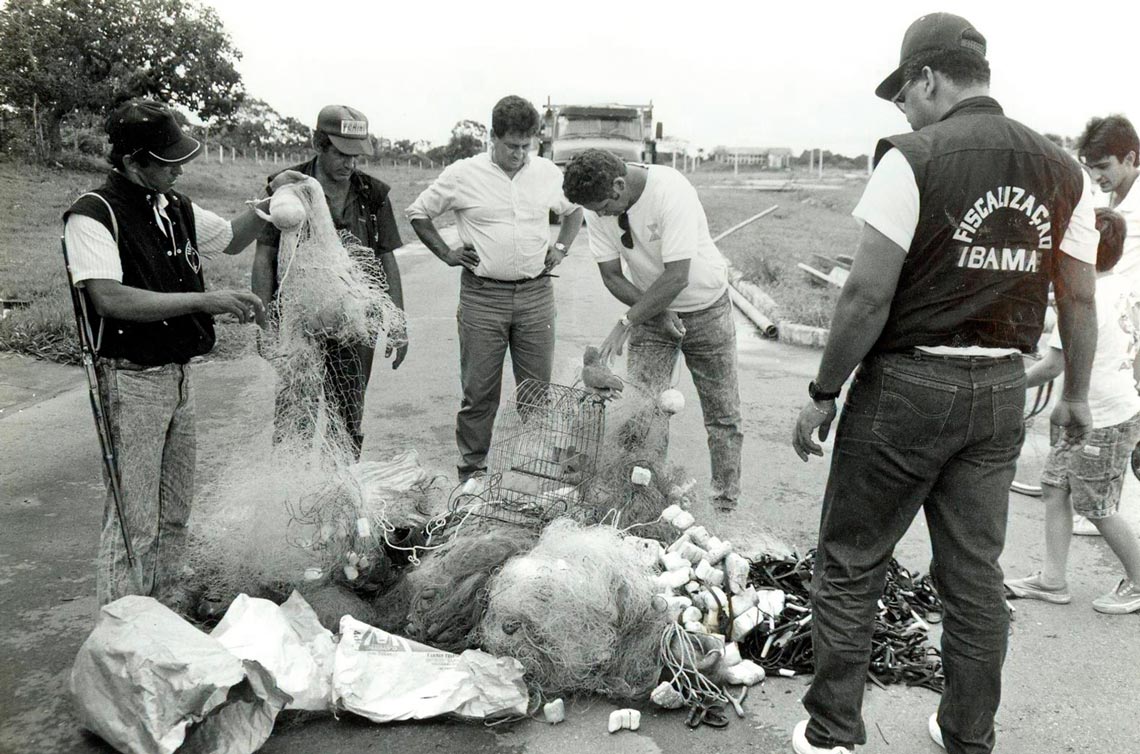The Brazilian Institute of the Environment and Renewable Natural Resources (IBAMA) has arrived at its 30th anniversary only to face the challenge of maintaining its autonomy and agenda for protecting the environment. Through technical reports and scientific research the agency conducts operations to combat environmental crimes, and to monitor and control activities that involve the use of natural resources, such as oil exploration and iron ore mining, among other activities potentially destructive to the environment.
IBAMA was officially created on February 22, 1989, during the government of President José Sarney (1985–1990). Its objective was to integrate the activities of environmental resources management in Brazil, which until then had been conducted by various governmental institutions created throughout the 1960s and 1970s.
These included the Superintendency of Fisheries Development (SUDEPE) and the Brazilian Institute of Forest Development (IBDF), both linked to the Ministry of Agriculture, Livestock, and Supply (MAPA), and the Superintendency of Rubber (SUDHEVEA), which was linked to the then Ministry of Industry, Foreign Trade, and Services (MDIC).

Hermínio Lacerda / IBAMA
Load of wood from illegal logging intercepted by agentsHermínio Lacerda / IBAMA“These agencies had arisen during a period marked by the construction of large projects with enormous environmental impacts,” explains agronomist Leonardo Ribeiro Teixeira, an environmental analyst at IBAMA between 2003 and 2018. Such was the case of the Trans-Amazonian Highway, in northern Brazil, and the construction of the Itaipu Power Plant, in the country’s southern region. He recalls that the situation in the Amazon in the late 1980s was alarming, with extremely high rates of deforestation, while hunting and fishing also increased uncontrollably, as did conflict between traditional communities and the land’s new occupants.
The accumulation of incidents unleashed pressure on the government to move toward strengthening environmental management. “A team of experts and academics was convened in mid-1988 to assess the state of Brazil’s natural resources and propose strategies that would help reconcile economic development and ecological concerns in the country,” Teixeira recounts.
Out of this initiative came the idea that it would be necessary to centralize the management of official policies related to the protection of natural resources and their proper use within a single agency. “That was when it was decided to extinguish the old agencies and incorporate their employees into IBAMA”, notes sociologist Heitor Schulz Macedo, an environmental analyst at IBAMA between 2003 and 2008.

Wikimedia Commons / Roberto Lacava / IBAMA
More than 1 million baby turtles were monitored by the agency between 2017 and 2018 in ParáWikimedia Commons / Roberto Lacava / IBAMAScientific grounds
The first civil service exams for hiring environmental analysts at the agency weren’t held until 2002. “This paved the way for the improvement of compliance oversight, such as the use of georeferencing tools for identifying and classifying environmental infractions,” says Teixeira.
One of the hallmarks of IBAMA today is the development of projects built on scientific studies. “Its activities encompass a broad range of data and information from research and intelligence gathering, which serve as the basis for strategic environmental licensing and compliance enforcement activities,” wrote economist Nadi Helena Presser of the Department of Information Science at the Federal University of Pernambuco (UFPE), in an article published in 2018 in the journal Pesquisa Brasileira em Ciência da Informação e Biblioteconomia [Brazilian research in information science and librarianship].
The data from which the institute structures its operations are obtained through studies carried out by the agency itself or by universities and research institutions, through invitations or competitive bidding processes. An example of this is its Operation Panoptica, conceived in 2018 based on studies carried out by IBAMA analysts and researchers from the Federal University of Minas Gerais (UFMG). The operation aims to prevent deforestation in the Amazon by identifying the areas of greatest risk. This is done with georeferenced data obtained by the National Institute for Space Research (INPE). By identifying these areas, landowners are monitored and advised of the need to apply for authorization before clearing.

Wikimedia Commons Felipe Werneck / IBAMA
In May of 2018 IBAMA seized 7,387 illegally extracted logs from Pirititi indigenous land in RoraimaWikimedia Commons Felipe Werneck / IBAMAAccording to Henrique dos Santos Pereira, IBAMA superintendent from 2003 to 2009 and a professor of environmental sciences at the Federal University of Amazonas (UFAM), IBAMA has developed two other highly important projects specifically for the Amazon: the Várzea [floodplains] Natural Resources Management Project (PROVÁRZEA) and the Support for Sustainable Forest Management in the Amazon Project (PROMANEJO), both under the Pilot Program for the Conservation of Brazilian Rainforests (PPG7), an initiative of the Brazilian government in partnership with the international community, including the Group of 7 (G-7), and the World Bank.
ProVárzea, launched in 2001, aimed to establish the scientific, technical, and political grounds for the conservation and environmentally and socially sustainable management of the natural resources of the floodplains of the central Amazon Basin. “The project had the collaboration of universities and research institutes in the Amazon region, which were hired by IBAMA to carry out a range of research,” explains oceanographer and PROVÁRZEA coordinator Mauro Luis Ruffino.
IBAMA is fighting to maintain its administrative, technical, and budgetary autonomy
According to data obtained through the government’s Transparency Portal, IBAMA currently has 3,922 employees, including technicians and researchers, those hired through civil service exams, and staff hired as independent contractors for commissioned positions. Its budget for this year is R$1.73 billion. Among other objectives, this amount should subsidize IBAMA’s activities in 2019, which will be based on the Diagnóstico dos Delitos Ambientais 2018 (2018 environmental crimes analysis), which maps out both national and state problems.
Over the last several months the agency has struggled to maintain its administrative, technical, and budgetary autonomy. Since March, it has been necessary to direct press inquiries related to IBAMA’s activities to the press office of the Ministry of the Environment (MMA). This has hindered journalists’ and NGOs’ ability to access, for example, official information and data related to actions taken by the environmental agency.
Republish
